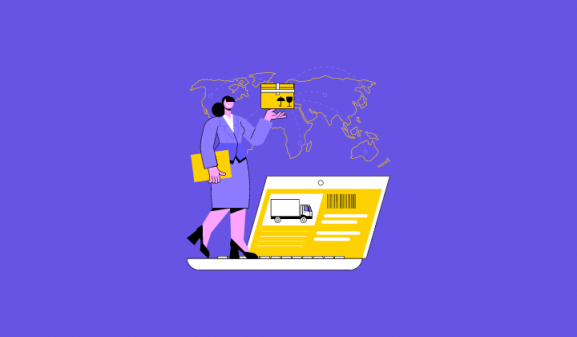Are you looking for ways to reduce transportation costs? If shipping is important to your business, you’ll likely deal with rising costs in all aspects of transportation logistics. This includes the usual increases in fuel and equipment prices, along with various budget challenges from different angles.
For businesses, lowering transportation and logistics costs is always a top priority. There are many methods to reduce these expenses, improve supply chain operations, and save money.
You can reduce logistical costs by doing things like managing inventory better, setting up more efficient shipping routes, improving processes, and strengthening relationships with suppliers and partners.
A key factor in cutting logistics costs is to treat your customers well and listen to their needs; profits will follow. To help you find more innovative ideas, here, we delve into ten effective strategies to reduce transportation costs, empowering you to streamline operations and boost your bottom line in 2024.
1. Optimize Route Planning
Efficient route planning is more than just finding the shortest path between two points. It involves analyzing traffic patterns, road conditions, and delivery schedules to avoid delays and minimize fuel usage. Leveraging Logistics Management Software can automate this process, offering real-time adjustments as conditions change. This technology can predict traffic hotspots, suggest alternative routes during delays, and even consolidate deliveries to the same area. By minimizing the distance traveled and time spent on the road, companies can reduce fuel expenses, vehicle wear, and tear, and improve overall delivery efficiency.
2. Consider Logistics App Development
The upfront Logistics App Development Cost may seem significant, but the long-term savings and operational efficiencies it brings can far outweigh this investment. A custom logistics app can integrate features like inventory management, route optimization, and real-time tracking, all tailored to your specific operational needs. This ensures that drivers and dispatchers are always informed, reducing idle times and improving delivery speeds. Moreover, by automating manual processes, businesses can reduce errors, enhance customer satisfaction with faster deliveries, and ultimately save on labor costs.
3. Embrace Technology
Adopting advanced technologies can transform your transportation operations from reactive to proactive. GPS tracking systems allow for real-time vehicle monitoring, which helps in immediate decision-making and enhances security. Automated routing systems consider various factors such as delivery windows, vehicle capacity, and traffic conditions to optimize routes automatically. Additionally, investing in vehicle load optimization software ensures that each vehicle is loaded to its optimal capacity, reducing the number of trips required and maximizing fuel efficiency.
Do you know? Logistics App Development: Why It’s Necessary For Your Logistics Business?
4. Regular Vehicle Maintenance
Regular maintenance of your fleet is not just an operational requirement but a strategic advantage. Routine checks and timely repairs prevent major breakdowns that can cause costly disruptions. Maintaining vehicles in top condition also ensures they operate efficiently, using less fuel and reducing emissions. Moreover, a well-maintained fleet is safer to operate, reducing the risk of accidents and the associated costs of insurance and liability claims. Implementing a preventative maintenance program can extend the lifespan of your vehicles and safeguard your business against unexpected expenses.
5. Consolidate Shipments
Consolidating shipments can significantly cut transportation costs by reducing the number of trips required to deliver products. By planning and combining orders so that each vehicle carries as close to full capacity as possible, companies can maximize their logistical efficiency. This strategy not only lowers fuel costs but also decreases the wear and tear on vehicles and reduces emissions. Furthermore, consolidation can lead to better negotiation of shipping rates due to higher volumes, enhancing overall savings.
Looking for? Logistics Automation Companies
6. Analyze and Adjust
Adopting a data-driven approach to transportation management can uncover hidden inefficiencies and opportunities for cost savings. Regular analysis of transportation data—such as fuel usage, vehicle maintenance costs, delivery times, and route efficiency—can help identify patterns and problem areas. Using this information, businesses can make informed adjustments to routes, delivery schedules, and fleet utilization. This continuous improvement cycle ensures that transportation strategies remain cost-effective and responsive to changing business needs and market conditions.
7. Train Your Staff
Investing in driver and staff training can lead to more than just improved compliance and safety. Training programs that focus on eco-driving techniques can teach drivers how to operate vehicles in ways that maximize fuel efficiency, such as maintaining steady speeds and optimizing gear usage. Training in proper cargo handling and security practices also reduces the likelihood of damage to goods, minimizing waste and the costs associated with returns and replacements. Furthermore, well-trained employees are typically more engaged and productive, which positively impacts overall operational efficiency.
8. Leverage Backhauling
Backhauling is a strategic way to utilize the return journey of a vehicle, which would otherwise travel empty. By arranging to pick up new loads for the return trip, businesses can dramatically cut the cost per trip and increase revenue opportunities. This requires coordination with other businesses or within different divisions of the same company to find cargo that needs to be transported in the direction of the vehicle’s return. While this may require more sophisticated route planning and coordination, the reduction in empty miles traveled can significantly decrease transportation costs.
9. Negotiate with Suppliers
Effective negotiation with suppliers and shipping partners can help to reduce logistics costs. Companies should regularly review and renegotiate contracts to take advantage of better rates or discounts for bulk fuel purchases or long-term commitments. Building strong relationships with suppliers can also lead to more favorable payment terms, further improving cash flow. By actively engaging with partners and continuously seeking better deals, businesses can reduce their overall transportation expenditures.
10. Reap the Benefits of Logistics Mobile Apps
Logistics mobile apps bring a host of benefits to businesses by enhancing operational control, reducing paperwork, and improving communication between drivers and dispatchers. These apps can provide features such as electronic proof of delivery, real-time traffic updates, and dynamic routing adjustments, which help reduce delays and increase delivery reliability. Additionally, the data collected through these apps can be analyzed to further refine transportation strategies, improving customer satisfaction and reducing costs over time.
Final Words
As we look ahead to 2024, implementing these detailed strategies to reduce transportation costs is not just beneficial—it’s essential for maintaining a competitive edge. Each strategy we’ve explored offers a specific avenue for cost reduction, from optimizing route planning with advanced software to leveraging modern logistics mobile apps. These efforts collectively contribute to more efficient, cost-effective operations.
Remember, the key to achieving and sustaining reduced transportation costs lies in continuous improvement and adaptation to new technologies and market conditions. By staying proactive, continuously analyzing performance, and adapting your strategies accordingly, your business can not only reduce costs but also improve service quality and customer satisfaction.
Invest today in these smart strategies and watch as your transportation logistics transform into a streamlined, cost-saving component of your business. Let’s move forward together, driving efficiencies and fostering growth in every route we take.
Related FAQs
What are the best practices for maintaining a commercial fleet?
Regular maintenance, real-time monitoring with GPS tracking, and driver training programs are essential best practices for maintaining a commercial fleet efficiently.
How can technology help in reducing transportation costs?
Technology such as route optimization software and logistics apps can reduce transportation costs by enhancing route efficiency and real-time decision-making.
What is the impact of route optimization on customer satisfaction?
Route optimization can significantly improve delivery times and reliability, enhancing overall customer satisfaction with more consistent and timely deliveries.
How does consolidating shipments save on transportation costs?
Consolidating shipments maximizes load efficiency, reduces the number of trips needed, and lowers fuel consumption and vehicle wear, thus saving on overall transportation costs.
What are the benefits of investing in logistics management software?
Investing in logistics management software provides benefits like improved route planning, inventory management, and streamlined operations, leading to significant cost savings and operational efficiencies.



